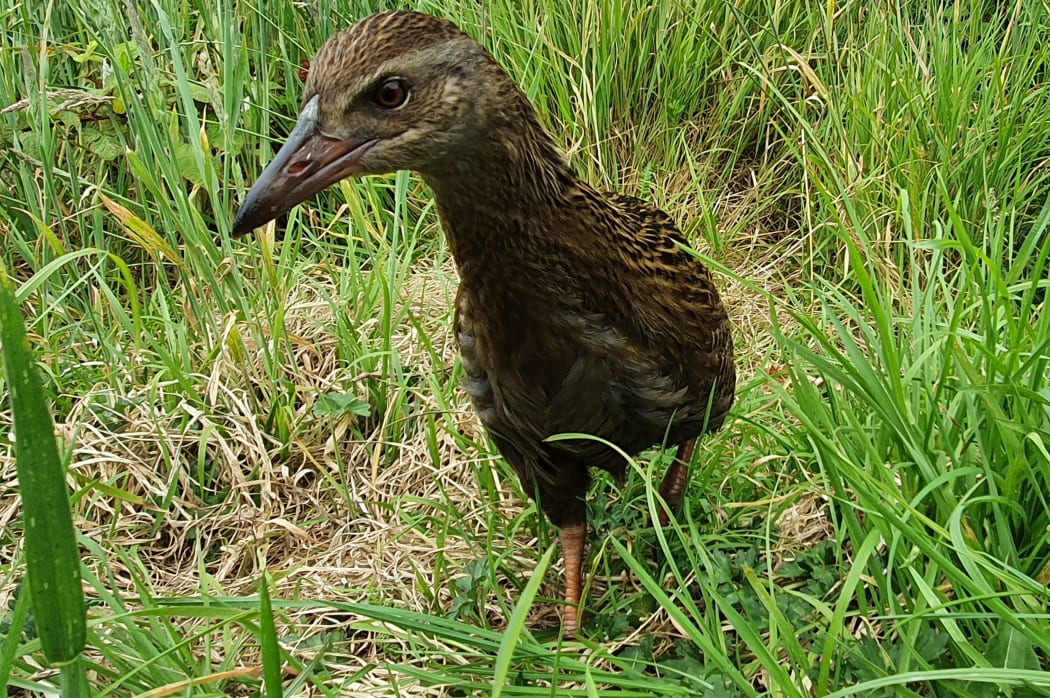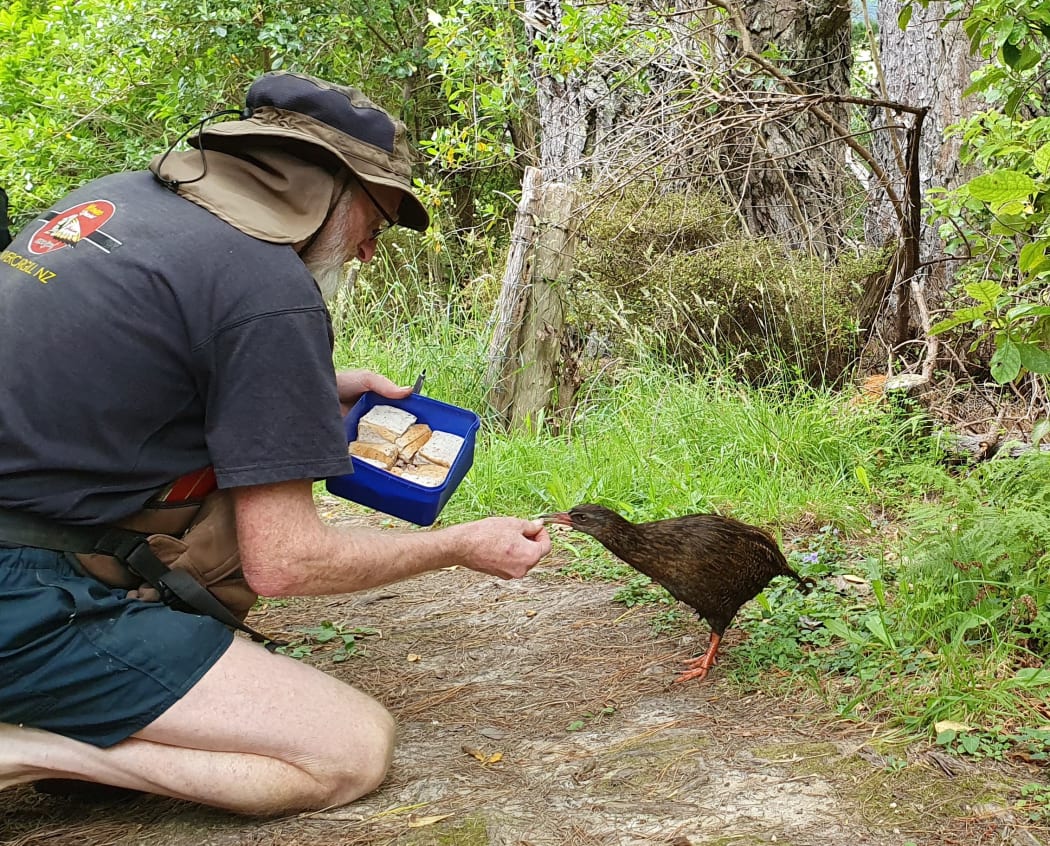The weka is a bird of contradictions. Curious, but wary.
Or as ornithologist Ralph Powlesland puts it in the title of his book about the flightless bird, the weka is both an opportunist and a battler.

A juvenile weka showing the curious nature of the species. Photo: RNZ / Alison Ballance
Subscribe to Our Changing World for free on Apple Podcasts, Spotify, Stitcher, iHeartRADIO, Google Podcasts, RadioPublic or wherever you listen to your podcasts
Twice a day, Ralph Powlesland gathers up his notebook and binoculars, and an ice cream container full of damp bread and feral goat meat, and heads out to check on the local weka.
Ralph and his wife, Mary, keep an eye on ten pairs of weka that live near their house on a Marlborough Sounds farm that is regenerating back to bush.
Ralph walks the same circuit each morning and late afternoon. His route takes him through bush, an orchard and some ungrazed paddocks, and past the vegetable gardens which are well fenced – with a roof – to prevent hungry weka making short work of the veges.
Many of the birds are banded for easy recognition, while a few have physical features that enable Ralph to identify them.

Ornithologist Ralph Powlesland feeds one of his study weka, which he checks on twice a day. Photo: RNZ / Alison Ballance
He stops in each weka territory, calling to the residents if they haven’t already if come out to see him. He offers the birds some bread and some meat, and watches to see what they do with it.
A weka pair can produce two to three broods a year, which typically have one or two chicks, although Ralph comments that one pair on the property once successfully raised a clutch of five chicks.
Ralph’s twice daily monitoring has given him plenty of data about the birds and insights into their behaviour.
He says he can tell from the way the birds react to the food, what stage of their breeding cycle they are up to.
“The funny thing is they can recognise quality of food,” says Ralph. “Sometimes females - when they are about to lay – will refuse to eat bread, but they’ll eat meat.”

Photo: Supplied
Adults with hungry chicks react differently to the two meal offerings as well.
“If you give bread to a female [with a chick], she’ll take it to the chick to eat, but if you give her some meat she’ll get really hyper. She’ll call and encourage the chick to be fed. It’s really fascinating.”
Ralph used to be a scientist with the Department of Conservation and began the weka study when he moved to the farm, on the south side of Pelorus Sound, in 2010.
The Marlborough Sounds, along with the West Coast, has long been a hot spot for weka. Ralph says the features that make it good for weka are high rainfall and a lack of ferrets.
Plentiful rain encourages a good abundance of soil invertebrates which are a key part of a weka’s diet.
You’ll find plenty of information about weka in Ralph’s new book, Weka – opportunist and battler, which describes the natural history of the weka and the findings of his multi-year research project.
Listen to the full podcast to hear more about the fascinating weka.


